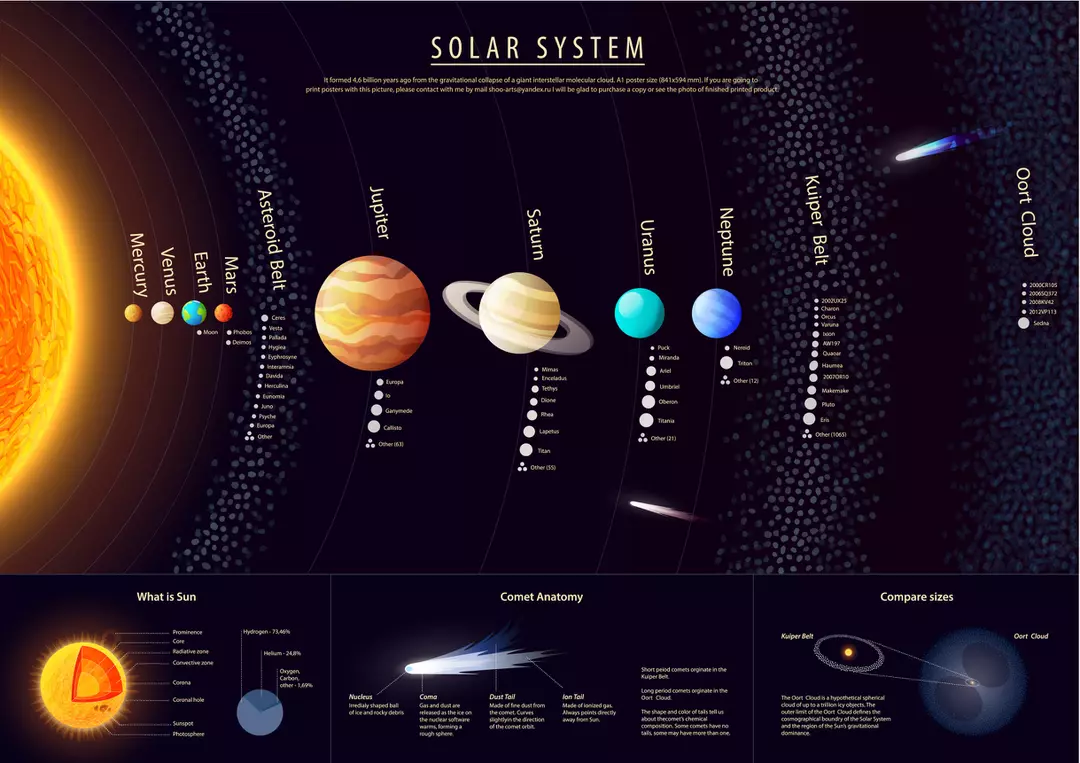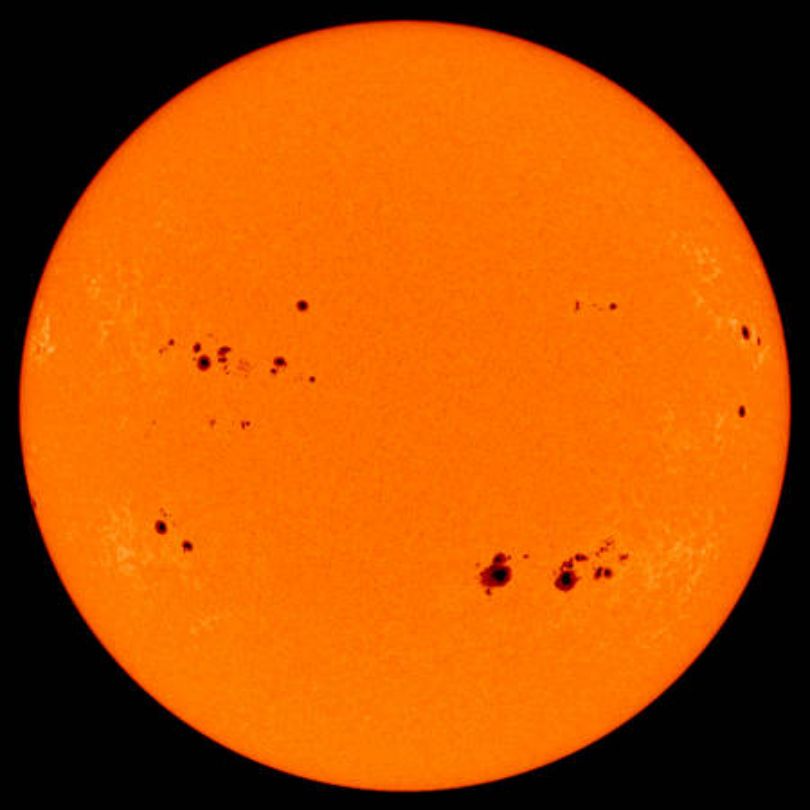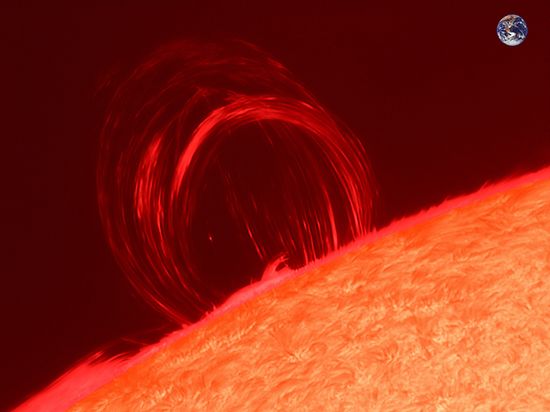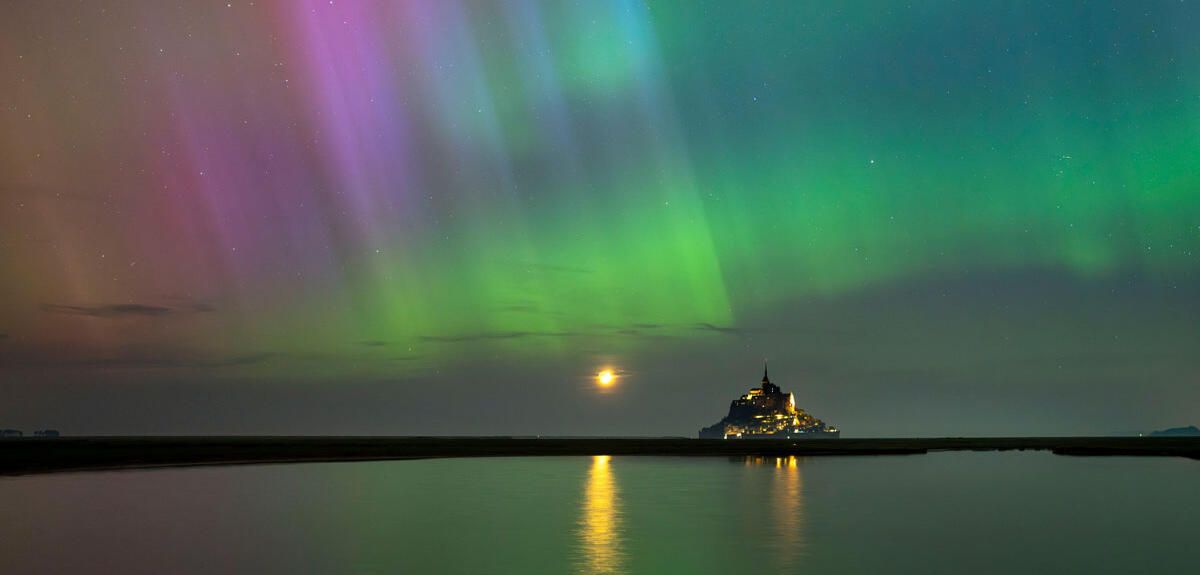What is the Sun?
The Earth belongs to a large family: the Solar System.
At its center sits a star, our star, and we have named it the Sun. Let's say right away that it is an average, even small, star, in terms of luminosity, size, and temperature.
This ball of hot gas, hydrogen, which it gradually transforms into helium, has a surface area approaching 6,000 degrees. Needless to say, at its center, where the pressure is so considerable that the hydrogen atoms transform into helium, the heat is 15 million degrees, which, I admit, no longer means anything to us humans.
I am often asked why a star shines. The answer is simple: because it is hot. Like a light bulb.
Since the Sun is a star, from now on, let's assume that all stars are Suns. It's exactly the same thing. Our Sun is yellow but with a white light; we can find blue and red stars... The color of a star indicates its age, but above all its temperature. And it's the opposite of bathroom faucets. A blue star is very hot, perhaps 20,000 degrees, like Rigel, for example, in the constellation of Orion, while a red star, like Antares in Scorpius, is only, so to speak, 4,500 degrees.
The planets orbit the Sun at different distances and therefore receive its heat, at varying temperatures.
Mercury, the closest to the Sun, has a temperature of 450 degrees. We might think that Venus, twice as far from the Sun as Mercury, must be cooler. Not at all. It is 480 degrees, and we should take inspiration from this reality to be more respectful of our planet Earth. I'll talk about this in more detail when I introduce you to Venus later, and its terrifying greenhouse effect
.
Observing the Sun.
With the
cielmonami association, we always begin our evenings by introducing and observing the Sun.
Here again, we have to overcome the reluctance of some who think that we should absolutely not look at the Sun, otherwise we'll immediately lose our view. This is true with ordinary instruments, but today's technology has provided us with very powerful tools for observing our star. We don't look in visible light, but only at one wavelength: hydrogen alpha (656 nanometers). No problem.
With this very expensive instrument, the two main apparent curiosities of the Sun are revealed: sunspots, which are actually areas cooler than the rest of the surface, hence a different color
and, of course, solar flares called prominences. Children, upon discovering these filaments extending beyond the limb, often refer to them as the Sun's "hair." Let's accept this very graphic comparison. Flares can be small, medium, or large.
The appearance of spots and flares is not constant, but follows an 11-year cycle of activity. The last peak of activity occurred in 2024, and so we have major flares every day, satisfying our desire for the fantastic. It is only with this type of instrument that we can observe the Sun.
A star is like a huge boiling pot, like a pot of water for cooking noodles; sometimes it boils over.





